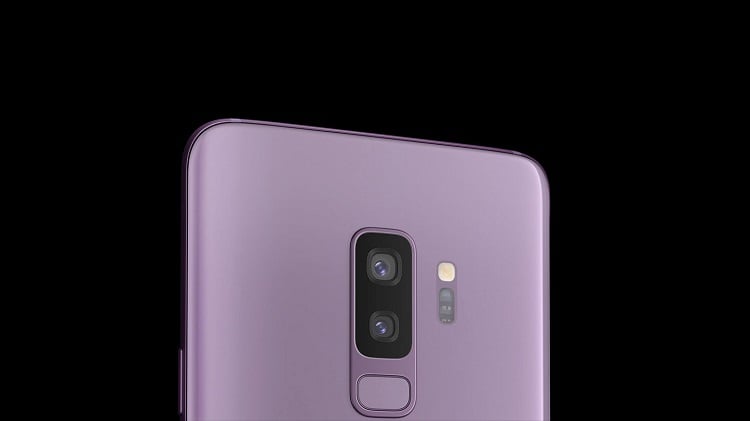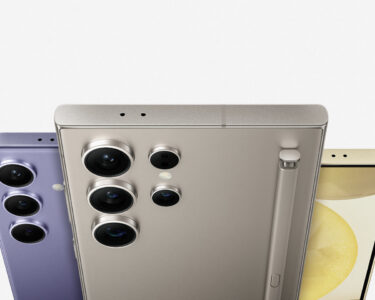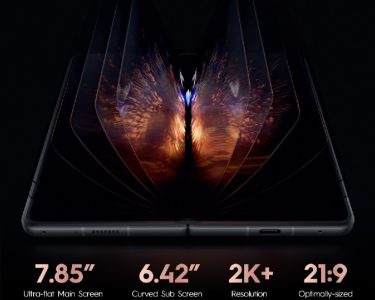Samsung Galaxy S9 Phones Top CR’s Ratings With Durability, Speed, and Sound. All things considered, Samsung’s new Galaxy S9 and S9+ smartphones represent only a modest leap forward for the manufacturer’s lineup, but according to our testers, the upgrade is worth a look. In fact, the two phones now sit atop CR’s smartphone ratings.
That shouldn’t come as a big surprise, given that they edge out the previously top-rated Galaxy S8 and S8+, released by Samsung in 2017. And those phones unseated Samsung’s S7 and S7 Edge, released in 2016.
The new phones offer stepped-up security features, super slow-motion video, and a camera that can turn your image into a personalized emoji. In the end, though, it was durability, speedier processing, and top-quality sound that nudged the S9 and S9+ (which start at $720 and $840, respectively) just ahead of the competition in an exceptionally crowded field. Just six points separate our top 20 smartphones.
“It really comes down to personal preference when you’re talking about high-end phones these days,” says Richard Fisco, Consumer Reports’ head of smartphone testing.
That’s not to say Samsung’s new phones are perfect. There’s a noticeable drop in battery life from the previous generation. And the phones’ cameras have taken a tiny step backward in performance, according to our testing, while still remaining impressive. But in both models, the good far outweighs the bad.
Here’s a look at how the Samsung Galaxy S9 and S9+ did in our testing.
Strengths of the Galaxy S9 and S9+
Improved Durability
The Galaxy S9 and S9+ look a lot like the S8 and S8+. They have the same tall, thin aspect ratio of 18.5:9, which makes them fairly big but easy to hold. The screen sizes (5.8 and 6.2 inches, respectively) haven’t changed materially, either, but Samsung whittled away at the already thin bezels around the edges.
Like the S8 phones, the S9s feature glass on front and back. In addition to their aesthetic appeal, the glass backs allow for
wireless charging, a feature premium phone shoppers have come to expect. (Be forewarned: They’re fingerprint magnets.)
But that design decision comes at a price. No matter what grade of glass you use, it will never be as tough as metal.
To test the durability of smartphones, we submit them to 100 drops in a tumbler. This ensures that they strike the bottom of the machine at myriad angles, simulating a wide range of falls.
After just 50 drops in our tumbler, the displays on the Galaxy S8 and S8+ were badly broken and not functional. The S9 phones performed much better, though. The S9 made it through 100 drops with just minor scratches. The S9+ survived the first 50 drops without a problem but cracked at some point in the next 50.
Those improvements are good news for Samsung fans, but as with any glass phone, you should consider protecting your investment with a quality case.
Faster Processor
Both phones include Qualcomm’s top-performing Snapdragon 845 processor. According to Fisco, the resulting upgrade in performance may not be striking. But the phones’ overall speed is impressive. Apps open in a snap and mobile websites load quickly when you have a fast internet connection, and the phones don’t get bogged down by fancier features (such as gaming) that require lots of brain power.
Great Stereo Speakers
If sound quality is important to you, the Galaxy S9 and S9+ feature well-designed stereo speakers. They were tuned— together with the headphones—by acoustic company AKG-Harman, which has been owned by Samsung since March 2017.
And despite their small size, the speakers reproduce audio at a good volume and create a full sound quality, our testers say.
For those of you who like to rock it old school, Samsung has also preserved the classic 3.5-mm headphone jack on the new phones.
Convenient Security Features
The fingerprint sensor on the Samsung S8 and S8+ drove a lot of people nuts. Located beside the camera, it made it very easy for someone to accidentally smudge the lens when trying to unlock the phone.
On the S9 phones, the fingerprint sensor is located below the camera, which reduces the chances of that happening. See the photo below.
Additionally, the S9 and S9+ offer a new Intelligent Scan biometric option that lets you use a combination of basic 2D facial recognition and an iris scan as an option for unlocking the phone. But Intelligent Scan is not secure enough for use with payment apps (unlike the 3D facial recognition technoloy in the iPhone X).
Shortcomings of the Galaxy S9 and S9+
Oversharpened Photos
The S9+ is the first Galaxy S phone with dual cameras on the back. That’s a feature that the company has included on its Galaxy Note8 and that some other phone makers have built into their premium models. Both S9 phones have 12-megapixel sensors, which is plenty of resolution for taking photos you can share and print. One camera provides a wide-angle lens, and the other has a 2x optical zoom lens. There’s also an 8-megapixel front-facing selfie camera.
The Galaxy S9 and S9+ can both shoot photos using two different apertures, either a smaller F2.4 aperture for bright-light conditions or a more open F1.5 aperture for low-light shots. And our testers say both proved to be a little better than their predecessors at taking low-light shots, though the difference is very slight. You have to compare two images side-by-side to discern it.
Both phones can also produce a bokeh effect, in which the subject is in sharp focus while the background is blurred, for more professional-looking portraits.
But our testers penalized the phones for oversharpening photos, a technique used in many smartphone models in recent years, according to Fisco, to artificially boost resolution scores. Doing this exaggerates the contrast between dark and light objects in the photos, potentially adding an unnatural-looking halo around the subject.
As a result, the S9+ placed fourth in our smartphone camera ratings—below the iPhone X, iPhone 8+, and iPhone 8. The S9 ranked 12th, four spots below the S8.
Fisco says it’s important to remember, though, that these days the cameras on almost all premium smartphones are very good. The Overall Scores of our top 20-rated smartphone cameras are separated by about half a point on a five-point scale.
Less Juice
The battery capacity is unchanged on the new phones. The Galaxy S9 has a 3,000-mAh battery, and the S9+ battery is slightly larger at 3,500-mAh. But the S9 phones both posted drops in battery life compared with their predecessors.
To find out exactly how long a phone’s battery can go, Consumer Reports uses a robotic finger programmed to put the phone through a range of tasks designed to simulate a consumer’s average day.
Must Read: Samsung offers reduced prices on Smartphones
The robot browses the internet, takes pictures, streams a video, uses GPS navigation, has a standby time while it does nothing, and, of course, makes phone calls. Your day-to-day battery life will vary, depending on variables such as how bright you keep the screen and how many apps are running in the background, but our results are a good way to compare phones.
In our testing, the S9’s battery lasted 22.5 hours, down from the S8’s 26 hours. The S9+ went for 24 hours, down from the 25.5 hours of the S8+. Those aren’t huge drops—both new phones offer more than enough juice to get an average person through the day—but they did lower the phones’ Overall Scores just a bit.
Should You Buy One?
The cameras on the Galaxy S9 and S9+ are fun to play with, and the beefed-up biometric security features are quick and easy to use. But other new features are more kitschy than practical.
While creating a 3D animated emoji of yourself can be amusing, it didn’t always result in a noticeable likeness. The company’s Super Slow-mo camera mode was tricky to use and limited to super-short clips. And our success rate with an informal trial of the artificial intelligence-powered calorie-count feature was quite low. It correctly identified a bunch of bananas in a photo we snapped but mistook a can of Coca-Cola for iced tea.
That’s a long way of saying you don’t need to rush out and buy one of these phones to impress your friends with a cutting-edge bag of tricks. The real benefits to owning an S9 or S9+ are less readily apparent.
Samsung’s new flagship phones are more resistant to breaking, are plenty fast, and are more pleasing to the ear. And as Galaxy fans have come to expect, they once again raise the standard for overall performance.




